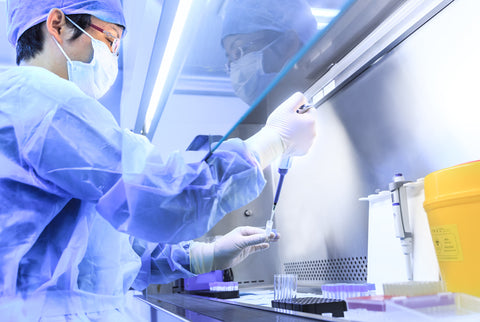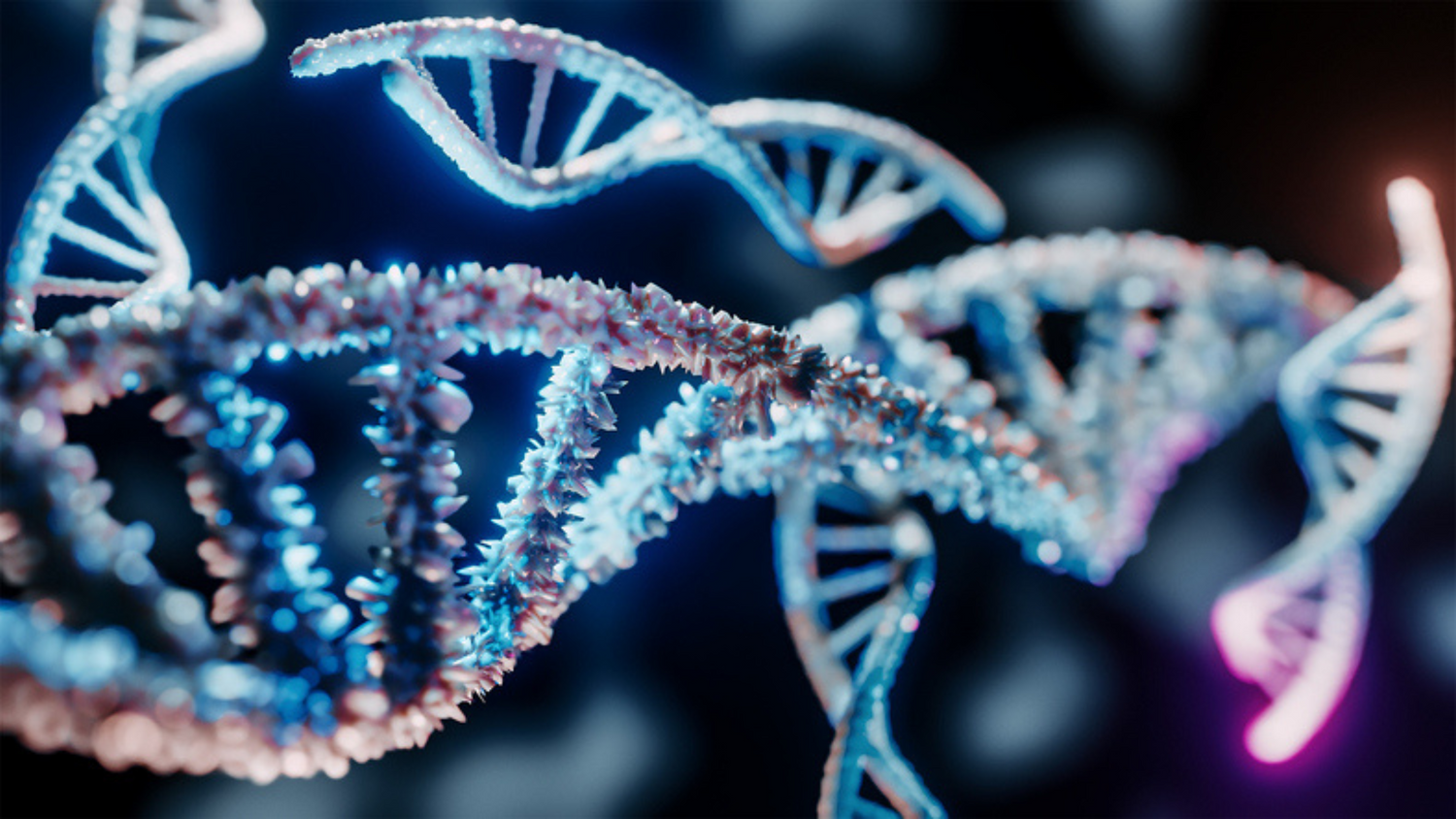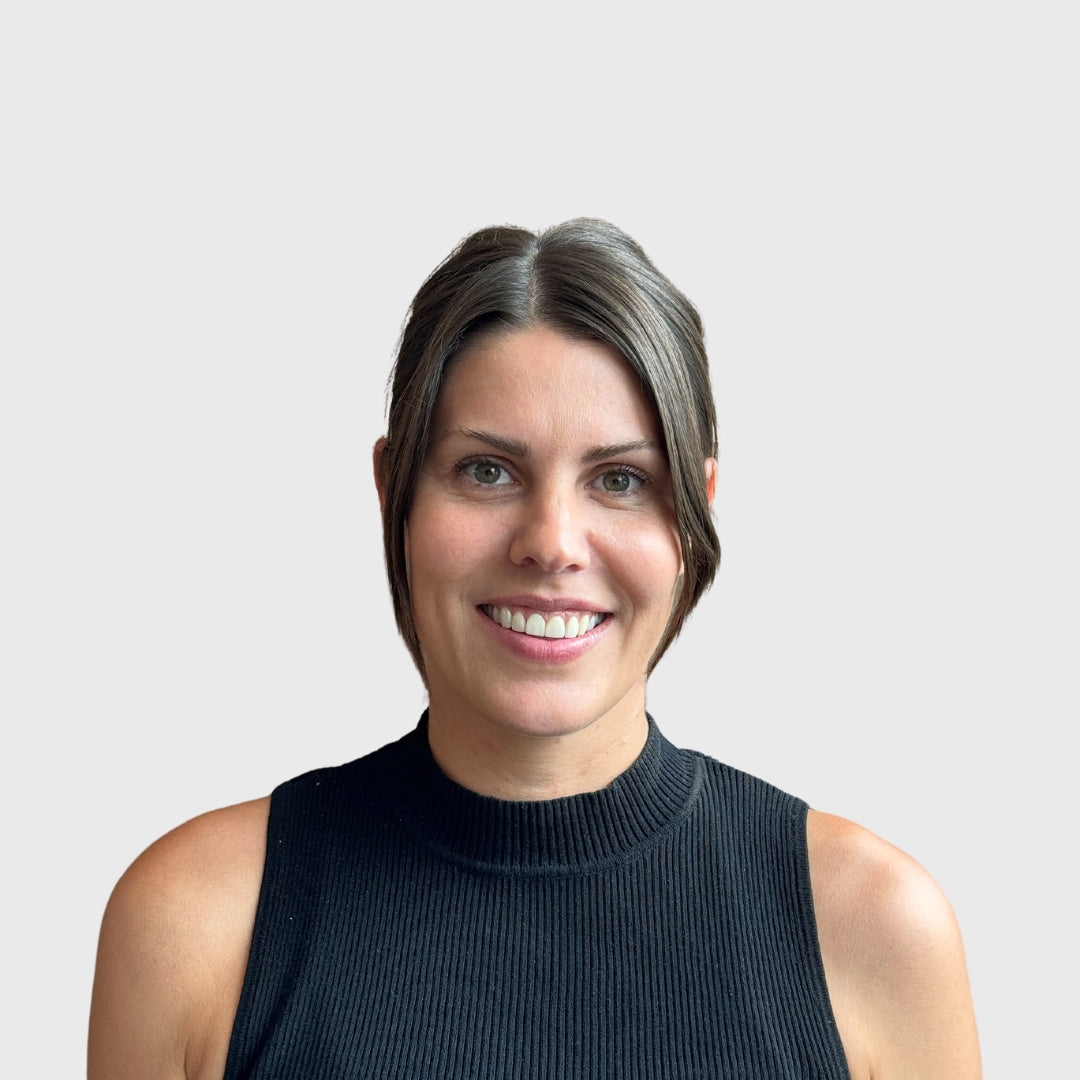The pursuit of eternal youth has led researchers to explore cellular mechanisms, uncovering groundbreaking findings that suggest the reversal of ageing may be within reach.
Central to this exploration are the Yamanaka factors, named after Shinya Yamanaka, whose discovery holds immense promise in the realms of ageing research and rejuvenation.
Emergence of Partial Cellular Reprogramming Through Yamanaka Factors
The unveiling of Yamanaka factors marked a pivotal shift in the scientific community's approach to the study of cellular ageing and regeneration.
This groundbreaking discovery, involving a quartet of genes known as Oct3/4, Sox2, Klf4, and c-Myc, illuminated a path to reverse the ageing process at the cellular level (R).
Scientists found that activating these specific genes within mature cells could induce a remarkable transformation, reverting these cells to a pluripotent stem cell state.
Pluripotent stem cells possess the unique ability to develop into almost any cell type in the body, opening the door to unprecedented regenerative possibilities.
This reprogramming does not just alter the cell's identity; it effectively resets the cellular clock, erasing signs of ageing and wear. The implications of this are profound, suggesting a mechanism through which the decline associated with ageing could be paused or even reversed.
Cells that had once aged and lost their functional prowess could, in theory, be rejuvenated, regaining their youthful functionality and capacity for repair.
Moreover, this discovery challenged and expanded our understanding of cellular differentiation and ageing.
Previously, it was believed that the ageing process was largely irreversible and that once a cell had reached a certain stage of maturity, its fate and functional capabilities were set in stone (R).
The Yamanaka factors demonstrated that the cellular age could be manipulated, suggesting that ageing is not as unidirectional or irreversible as once thought.
This reprogramming technique offers insights into the fundamental processes governing ageing and opens up new avenues for regenerative medicine, including the potential for developing treatments for age-related diseases, enhancing tissue repair, and even prolonging healthspan.
The ability to reset the age of a cell without altering its genetic code presents a novel and exciting frontier in the quest to understand and potentially mitigate the impacts of ageing.
Yamanaka Factors for Rejuvenating Cells
Researchers have successfully utilised Yamanaka factors to rejuvenate cells and tissues in animals, showcasing the potential for reversing ageing at the cellular level.
This significant breakthrough has not only expanded the horizons of regenerative medicine but has also provided promising avenues for treating age-related diseases (R).
Furthermore, extending beyond the foundational Yamanaka factors, a systematic exploration has uncovered additional transcription factors.
These factors, when manipulated through overexpression or repression, exhibit the ability to rejuvenate aged human skin fibroblasts.
This discovery suggests broader applications for cellular rejuvenation, hinting at the possibility of more comprehensive approaches to combating ageing (R).
Yamanaka Factors Seem to Reverse the Aging Process on an Epigenetic Level
Within the landscape of anti-aging strategies, one standout approach is epigenetic rejuvenation or reversal.
This method entails the transient expression of Yamanaka factors, which effectively reduces biological age without inducing complete dedifferentiation—a process where specialised, mature cells revert to a more primitive, less specialised state.
By making this distinction between rejuvenation and dedifferentiation, this approach presents a promising avenue for further advancement in anti-aging research (R, R).
Is It Possible to Utilise Yamanaka Factors in Living Organisms?
Utilising Yamanaka factors in living organisms is indeed feasible. Early experiments conducted on animals have yielded promising results, suggesting the potential for future application in rejuvenation therapies.
Nevertheless, employing Yamanaka factors in living organisms poses significant challenges, particularly regarding safety and efficacy (R).

Yamanaka Factors and Tissue Regeneration
Injecting Yamanaka factors directly into myofibers has demonstrated the activation of muscle stem cells, thereby boosting muscle regeneration in mice.
This finding suggests that Yamanaka factors have the capability to alter the stem cell environment, known as the niche, thereby facilitating tissue regeneration (R).
Yamanaka Factors Used to Enhance Cognitive Abilities in Aged Mice
Studies have demonstrated that Yamanaka factors can enhance cognitive functions in aged mice, suggesting potential applications for treating neurodegenerative diseases and age-related cognitive decline.
The cyclic induction of Yamanaka factors in mouse neurons of the dentate gyrus led to improved memory performance, suggesting their potential to ameliorate ageing features in the central nervous system (R).
Transient and controlled expression of Yamanaka factors in the mouse brain showed potential in expanding neurogenesis and preventing Alzheimer's disease hallmarks, including cognitive decline, in a disease mouse model (R).
Partial Reprogramming of Cells
Partial cellular reprogramming using Yamanaka factors is a technique aimed at rejuvenating cells by applying a set of transcription factors (Oct3/4, Klf-4, Sox-2, c-Myc) for a limited period.
This approach seeks to restore youthfulness to cells without completely reverting them to a pluripotent state, which can avoid the risks associated with full reprogramming, such as uncontrolled cell growth and differentiation.
Evidence from various studies highlights the potential and mechanisms of this approach:
📖 Cyclic Yamanaka factor expression can rejuvenate cells, delaying ageing-related diseases by altering cellular processes like the epigenome, transcriptome, proteome, and metabolome. It boosts mitochondrial function and decreases ageing-related metabolites, suggesting rejuvenation potential (R).
📖 Partial reprogramming is supported by reprogramming fibroblasts to cardiomyocytes and neural stem cells through transient pluripotency gene expression. This generates intermediates retaining their original identity yet responsive to differentiation factors, showcasing potential for rejuvenation in vitro and in vivo while preserving cell type identity (R).

📖 Short-term cyclic Yamanaka factor expression in vivo improves cellular and physiological ageing hallmarks, extending lifespan in a premature ageing mouse model. This underscores epigenetic dysregulation's role in ageing and suggests positive effects of epigenetic remodelling on ageing (R).
📖 Transient pluripotent reprogramming reverses ageing features in mammalian cells and tissues but may temporarily suppress somatic cell identity programs. Fine-tuning reprogramming is crucial to maximise benefits while minimising risks like loss of cell identity or neoplastic transformation. (R).
These findings suggest that partial cellular reprogramming holds promise for rejuvenating cells and potentially extending healthspan. However, the precise mechanisms, optimal conditions, and potential long-term effects require further investigation.
A Big Step Forward for Partial Cellular Reprogramming
In 2020, a significant milestone was achieved when researchers restored vision in aged and injured mice through partial cellular reprogramming.
This study developed an in-situ cellular reprogramming strategy that led to the restoration of vision in mouse models of retinitis pigmentosa, showcasing the ability to reprogram Müller glia to a retinal neuronal fate and restore visual functions, suggesting a novel strategy for treating degenerative diseases (R).
Improving the Technique of Partial Cell Reprogramming
In January 2021, researchers demonstrated that partial reprogramming could rejuvenate human cells by 30 years, revitalising old cells to function as though they were from a 25-year-old.
This approach involved exposing cells to reprogramming factors just enough to slightly push them past the boundary of being somatic to near stem cell state, using a method similar to prior animal studies with a doxycycline-activated lentiviral system.
The treated fibroblasts managed to preserve their original characteristics to revert back to fibroblasts. Notably, using Horvath’s clocks, cells aged nearly 60 appeared epigenetically similar to 25-year-old cells after 13 days of treatment, indicating an optimal cellular age for function (R).
Throughout 2022, significant progress included discoveries in enhancing cell physiology, improving tissue health, and extending lifespan through early-life reprogramming.
Studies revealed benefits in muscle regeneration, heart repair, and liver and spinal disc regeneration, marking a significant stride in the application of partial cellular reprogramming (R, R, R, R, R, R).
Commercialisation of Yamanaka factors
Numerous startups and biotech firms have emerged, focusing on cellular reprogramming to treat degenerative diseases and extend healthspan.
These companies are exploring various strategies, including direct in vivo reprogramming, the development of small molecule drugs that mimic the effects of Yamanaka factors, and safer methods of delivering gene therapy to targeted tissues.
Established pharmaceutical companies are also investing in this space through collaborations with biotech firms specialising in regenerative medicine or through their research and development programs.
These collaborations often aim to combine the resources and expertise of large pharma with the innovative technologies of biotech startups.
Research collaborations between academia and industry are crucial for advancing the basic science behind Yamanaka factors towards clinical applications.
Licensing of patents and technologies from universities to biotech companies is a common route for commercialising scientific discoveries.
Future Directions for Yamanaka Factors
As the field progresses, we may see more targeted approaches that minimise risks and enhance the efficacy of treatments.
Advances in gene editing technologies, such as CRISPR, and the development of safer viral vectors for gene delivery are among the innovations that could accelerate the commercialisation of Yamanaka factor-based therapies.
Additionally, combining cellular reprogramming with other therapeutic strategies, such as immunotherapy and precision medicine, may offer synergistic effects for treating complex diseases.
The Obstacles Facing Partial Cell Reprogramming and Yamanaka Factors
Safety Concerns: The potential for Yamanaka factors to induce tumorigenesis, given their ability to revert cells to a pluripotent state, is a significant safety concern. Developing methods to control the expression of these factors and ensuring their targeted delivery to specific tissues are critical challenges that need to be addressed.
Regulatory Hurdles: Regulatory approval for new therapies, especially those involving genetic manipulation and stem cells, is complex and stringent. Demonstrating the safety and efficacy of Yamanaka factor-based therapies in clinical trials is essential for gaining regulatory approval.
Ethical Considerations: The use of gene therapy and stem cells raises ethical questions that must be carefully considered, including concerns about long-term effects, potential for misuse, and accessibility of treatments.
Technical and Scalability Issues: Translating laboratory success into widely available treatments involves overcoming technical challenges related to the delivery of therapies, ensuring consistency and quality in manufacturing, and scaling up production.
Conclusion
The journey of Yamanaka factors from laboratory discovery to potential anti-aging treatments is a testament to the rapid progress in biotechnology. As research continues, the dream of harnessing these factors to combat ageing and extend healthspan is becoming increasingly realistic.
The exploration of Yamanaka factors and their role in ageing and rejuvenation represents one of the most exciting frontiers in modern science.
With each discovery, we inch closer to understanding the mechanisms of ageing and unlocking the potential for longer, healthier lives. The journey is complex and filled with challenges, but the promise of turning back the clock on ageing offers a compelling vision for the future.





